





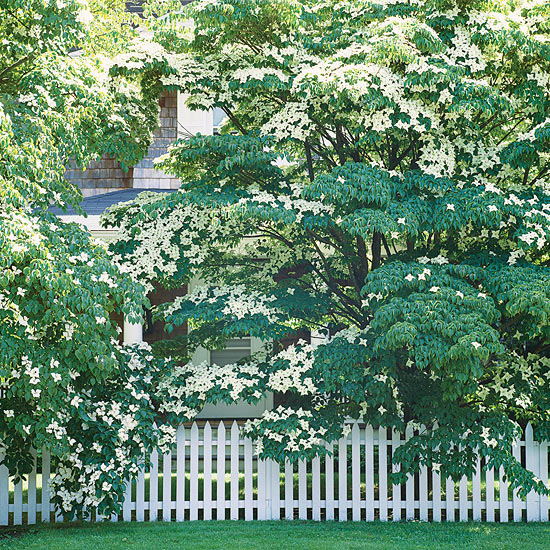 Kousa dogwood
Kousa dogwood
Showy and refined, dogwoods take center stage in spring with copious white to pink blooms and elegant structure. Flowering dogwood (Cornus florida) is the best known, but kousa dogwood (C. kousa) is generally more tolerant of stress and also more resistant to dogwood anthracnose and borers, both of which can be serious problems for C. florida. In addition to spring bloom, dogwoods exhibit stunning red and purple fall color. For best results, plant dogwoods in partial shade.
continue reading below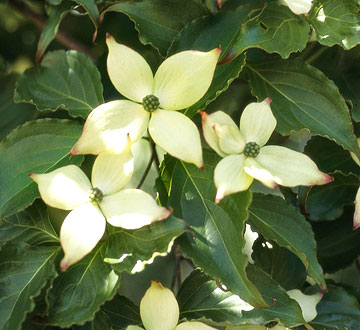 Kousa dogwood flowers
Kousa dogwood flowers
Height: 20-25 feet
Zones: 5-8
Editor's pick: Cornus kousa 'Satomi' boasts striking, dark pink blooms, as well as purple autumn foliage.
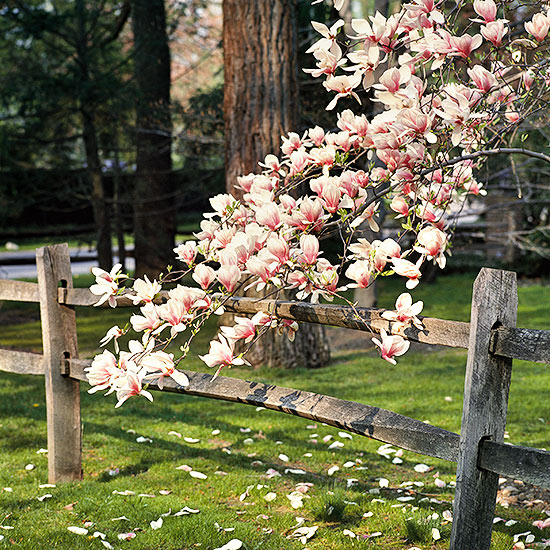
Southern magnolia (Magnolia grandiflora) is an icon of the South, with large stature to match its magnificent white blossoms. But the genus includes many other flowering notables. Saucer magnolia (M. x soulangeana) blooms profusely in spring in shades ranging from white to purple; lily-flowered magnolia (M. liliiflora) produces vivid purplish flowers in mid spring.
Height: varies; most are small to medium trees
Zones: most hardy in 6-9
Editor's pick: Magnolia 'Elizabeth' produces unusual yellow blooms; 'Galaxy' saucer magnolia is less likely
to lose its bloom to spring freeze.
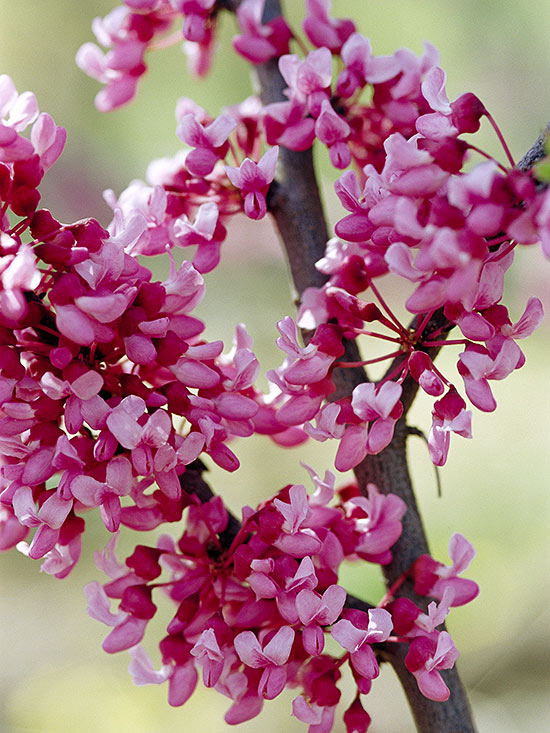 Eastern redbud flowers
Eastern redbud flowers
Redbuds announce spring in no uncertain terms. Easy to care for and fast-growing, they're among the surest and most memorable sources of spring color. Eastern redbud (Cercis canadensis) sports deep crimson to rosy-pink flower clusters before spring's onset of leaves. 'Avondale' redbud (C. chinensis 'Avondale') fills smaller spaces, topping out at just 12 feet. Western redbud (C. occidentalis) is adapted to arid climates. Select and prune redbuds for low branching angles to lessen splitting, to which redbuds are susceptible.
Height: 12-20 feet
Zones: 6-9
Editor's pick: Cercis canadensis 'Forest Pansy' has rich purple coloration on young foliage.
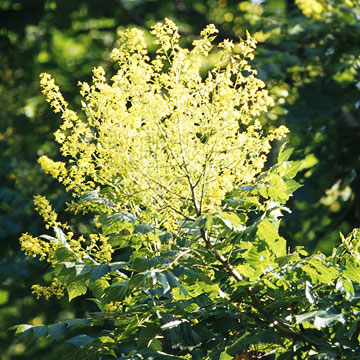 Golden rain tree
Golden rain tree
The fragrant yellow flower spikes of golden-rain tree (Koelreuteria paniculata) blaze in the summer sun. They're followed by papery, lanternlike, brownish-pink seed pods that persist into winter. Well behaved, the golden rain tree is good for parking strips and other tight spaces.
Height: 30 feet
Zones: 6-9
The genus Prunus includes a large number of attractive flowering species and hybrids, but foremost among them are the flowering cherries. Worthwhile types are Japanese flowering cherry (P. 'Mount Fuji') with its sweetly perfumed white flowers and graceful, arching form; and P. 'Okame', which takes the prize for earliest flowering cherry, offering an explosion of carmine-red blooms after the last dregs of winter.
Height: 25-30 feet
Zones: most 6-8
Editor's pick: Kwanzan cherry (P. 'Kwanzan') for its profusion of double, pink flowers.
White to pink flowers burst from reddish buds to make flowering crab apples (Malus spp.) among the loveliest spring adornments. They're rugged, too, being among the most reliable spring bloomers for Northern climates. Hundreds of varieties are available; be sure to choose disease-resistant types. M. sargentii 'Tina', M. 'Prairifire', and M. 'Snowdrift' are just a few of the many selections available.
Height: varies; most remain well under 30 feet
Zones: 5-8
Editor's pick: Malus 'Indian Summer'; rose-red blooms followed by red fruit.
Golden chain tree (Laburnum x watereri) drips with spectacular clusters of scented, yellow flowers in early summer. Consider growing this tree as an espalier to showcase its flowers, which resemble wisteria blooms, or plant it as a specimen tree where its display will have a big impact.
Height: 25 feet
Zones: 6-8
Editor's pick: 'Vossii' bears abundant, extra-long clusters.
Glowing, purplish-blue spring flowers drape 8-12 inches amid ferny foliage, making jacaranda (Jacaranda mimosifolia) a star in warm climates. Once established, this drought- tolerant tropical beauty needs only occasional water. Jacaranda casts a pleasant filtered shade, so it's excellent near a deck or patio.
Height: 50 feet
Zones: 10-11
Few trees bloom as profusely in summer as crape myrtle. The delicate flowers appear in large spikes of white, pink, or lavender atop new growth. The smooth, peeling bark of crape myrtle is also exceptional. Crape myrtles (Lagerstroemia indica and hybrids) are fully hardy to Zone 7; they'll survive in Zones 5 and 6 but may die back to the roots, regrowing each year in shrubby form. Fortunately, they typically bloom even when regrowing from the roots. To control size and encourage vigorous growth and bloom, prune hard each winter.
Height: 25 feet
Zones: 7-9
Editor's pick: 'Peppermint Lace' has unusual pink flowers with white fringes.
Copyright © www.100flowers.win Botanic Garden All Rights Reserved